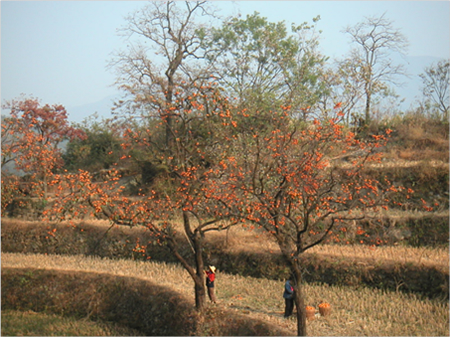Reserch
Astringency loss in kaki (Diospyros kaki)
Astringency is a unique character of kaki fruit. We are studying the physiology and genetics of astringency loss in kaki. Our results are used to breed PCNA (pollination-constant and non-astringent)-type kaki, the fruit of which is most desirable for fresh consumption. We have developed several molecular markers for selecting PCNA seedlings. Furthermore, we are now surveying kaki germplasm in China to find novel genetic resources for PCNA-type kaki.

References
- Kanzaki, S., T. Akagi, T. Masuko, M. Kimura, M. Yamada, A. Sato, N. Mitani, N. Utsunomiya, and K. Yonemori. 2010. SCAR markers for practical application of marker-assisted selection in persimmon (Diospyros kaki Thunb.) breeding. J. Japan. Soc. Hort. Sci. 79: 150-155.
- Akagi, T., R. Tao, T. Tsujimoto, A. Kono, and K. Yonemori. 2012. Fine genotyping of a highly polymorphic ASTRINGENCY-linked locus reveals variable hexasomic inheritance in persimmon (Diospyros kaki Thunb.) cultivars. Tree Genetics & Genomes 8:195-204.
- Nishiyama, S., N. Onoue, A. Kono, A. Sato, K. Ushijima, H. Yamane, R. Tao, and K. Yonemori. 2018. Comparative mapping of the ASTRINGENCY locus controlling fruit astringency in hexaploid persimmon (Diospyros kaki Thunb.) with the diploid D. lotus reference genome. Hort. J. 87: 315-323



